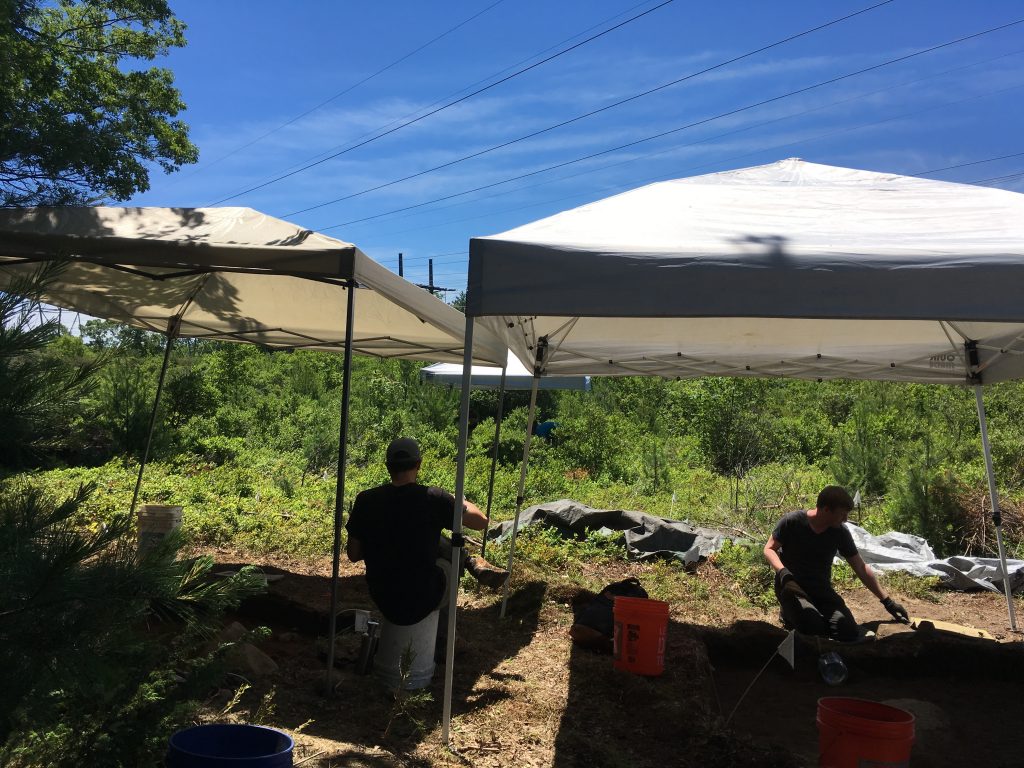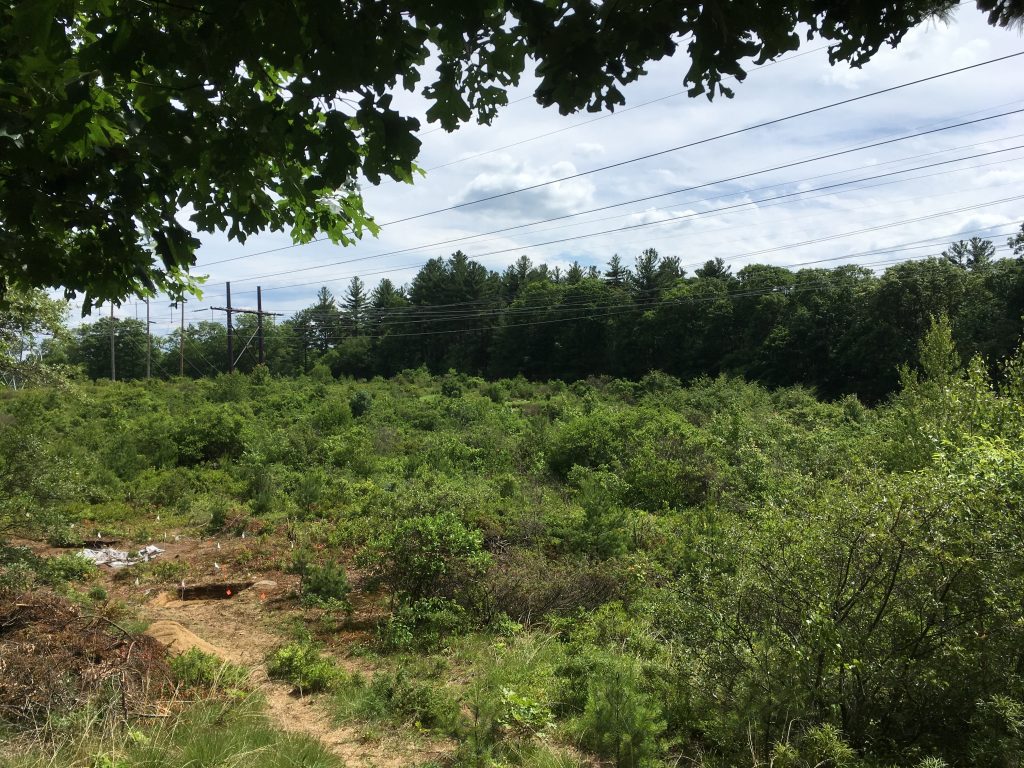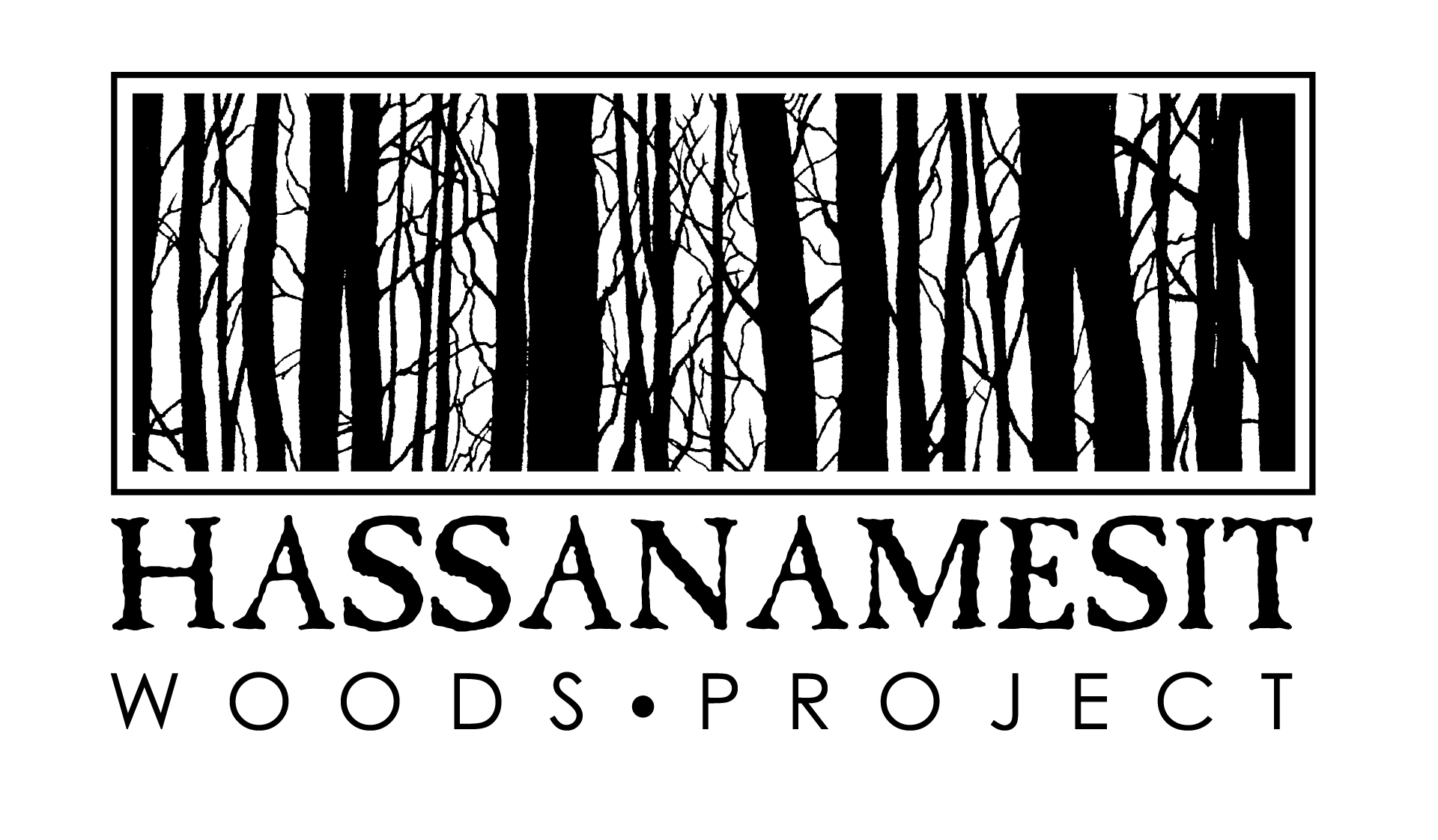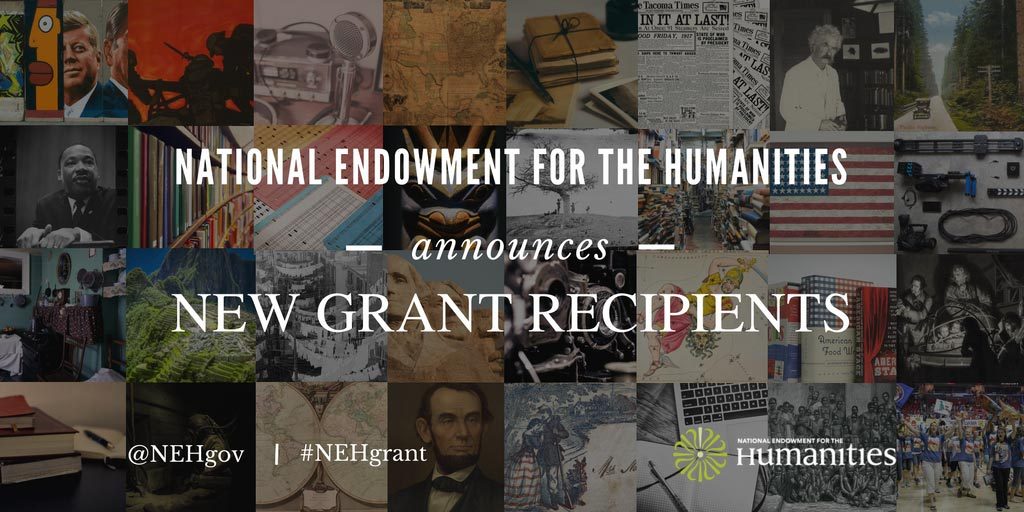It’s been a busy penultimate week out at Hassanamesit Woods, with three areas of excavation and quite a few interesting site features being discovered by the field school students.

Graduate students Gary (left) and Brian (right) work on paperwork and profile straightening for their respective units under a brilliant blue sky. The weather this past week has been amazing out in Hassanamesit Woods.
Over at the Augustus Salisbury site graduate student Rick and Dr. Trigg have continued to excavate units associated with the extant Salisbury foundation, finding several architectural features as they’ve gone. The most important has been what appears to be the continuation of the wall still visible on the surface, which will give us a better idea of the extent of enclosure on the property. This is especially important for Rick, as his thesis is focused on the utilization of land surrounding Keith’s Hill in Grafton. Dr. Trigg and Rick also found an interesting bone-related mystery for graduate student Liz to ponder. Liz is a faunal analyst, and is working with Dr. Trigg to solve the mystery– a rare opportunity at Hassanamesit Woods, as the preservation for organic material is not the best.

Tyler (left) and Andrew prepare to draw the east profile of their unit. Tyler is marking out the grid for drawing, and Andrew is using a brush to clarify stratigraphy changes in the unit wall.

Graduate student Liz holds a particularly stubborn (and massive) chunk of duff removed from her unit. Due to the densely packed bushes, lichens, and other plant material on the hilltop, the top level of soil can only be removed in chunks and broken up manually.
Over at the Deb Newman site graduate students Brian, Gary, Tyler, and Liz, along with undergraduates Andrew, Bryn, and Alex continued to open and fully excavate several units surrounding metal detector hits marked by Brian in earlier weeks. As the week progressed, first Tyler and Andrew, and then Liz and visiting grad student Ivana moved over to a nearby hilltop about 300 yards from the Deb Newman site proper, to excavate some promising units surrounding glacial erratics (boulders) that would have been on the surface when the site was occupied. Unfortunately with the exception of a more recent hearth and a single possible posthole, these units have not revealed as much as hoped, and the plan for the final week of excavation is for Tyler and Andrew to move back over to the Salisbury site while Liz finishes up on the hill.
Graduate student Melissa started the week mapping with Lauren, refining coordinates, shooting in elevations and datum points, and, with the help of Dr. Schoenfelder, teaching all of the field school students the basics of using a total station. Melissa then moved back to the Deb Newman site and has been working on another excavation unit near one of Brian’s metal detector hits.

One of the many new flags shot in by Lauren and Melissa, showing easting, northing, and elevation information for a unit.
As this brilliantly hot and sunny week wrapped up, Dr. Mrozowski urged his students to not only consider the artifacts coming out of the ground, but the impact of both time and space on the sites they are excavating. He stressed that the most important information about site usage can come from holistic interpretation of recovered artifacts, oral and written history, and the consideration of how change and use over time intersects with the space inhabited by people at the site.
Next week is our last week at Hassanamesit woods, and as we wrap up this blog will post exit interviews from some of the field school students to get an idea of how the experience has benefited them. We hope you’ve enjoyed following along with our progress, and we’ll update again soon!




















